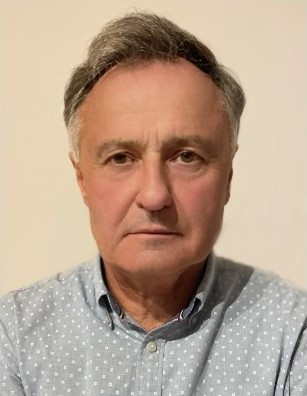Keynote Speaker

Prof. Henryk Paul
Institute of Metallurgy and Materials Science,Polish Academy of Sciences, Poland
Speech Title: Phase Transformations in Explosively Welded Metallic Materials
Abstract: The direct joining of Ta with steel leads to several problems inherent in the formation of brittle reaction regions and complexities associated with the formation of butt joints during further processing of the composite. To overcome these complications, an intermediate layer made of a soft material with high thermal conductivity, such as Cu, can be used. This work presents a comprehensive study of recent advances in understanding of the microstructure-property relationships in a tantalum-stainless steel (SS) composite fabricated by explosive welding with copper interlayers, both during composite formation and post-processing annealing. Using scanning (SEM) and transmission electron microscopy (TEM), interfacial microstructures were investigated, thus providing guidelines for the design of materials. To support the microstructural findings, the evolution of the structure and properties of the interfacial layers was investigated using X-ray synchrotron radiation and nanohardness tests, respectively. Particular attention was paid to the description of the reaction regions and the competition between the strain hardening and softening processes occurring during the formation of the clad and further heat treatment. It was observed that the composite interfacial layers exhibited a complex and hierarchical microstructure. Analyses of the solidified melt regions using various SEM and TEM techniques revealed areas with different morphology and chemical composition. The reaction regions located near the Ta/Cu interface consisted only of a mixture of Cu and Ta particles (ultrafine grains and small dendrites), while the areas near the Cu/SS interface consisted of nanograins with a more complex chemical composition, containing elements from bonded sheets. No significant influence of the annealing process (under the applied conditions - at 750 °C for times up to 103 h) on changes in the microstructure of the solidified melt was observed, apart from a slight increase in grain size. The solidified melt regions, in the as-welded and annealed states were basically 2-3 times harder than the strain hardened steel layers.
Keywords: Explosive welding, Ta/Cu/steel clads, SEM & TEM, Deformation
Acknowledgements: This research was funded in part by National Science Centre (NCN) of Poland, within the project no.: 2018/31/B/ST8/00942.
Biography: Professor Henryk Paul received Dr. Eng. at Institute of Metallurgy and Materials Science (IMMS), Polish Academy of Sciences in Krakow (Poland) in 1989. After working as an assistant professor, he was promoted to an associate professor in 2003 and to a full Professor in 2010, all in IMMS. He is a Co-ordinator of long-term scientific collaborations with ENSM de Saint Etienne and University Paris-Sud, Orsay (France). He is the author more than 270 original papers, 22 book chapters, and 20 review papers on different aspects of phases transformation. His research interests include explosive welding technology, fundamental aspects of deformation, and in particular plastic flow instabilities formation, recovery and recrystallization, SPD processing of metals. He has served as a plenary, keynote or invited speaker at 30 international conferences. His publications receive ~ 2 000 citations (h-index: 26) according to Scopus. Currently employed at the Institute of Metallurgy and Materials Science in Krakow.
